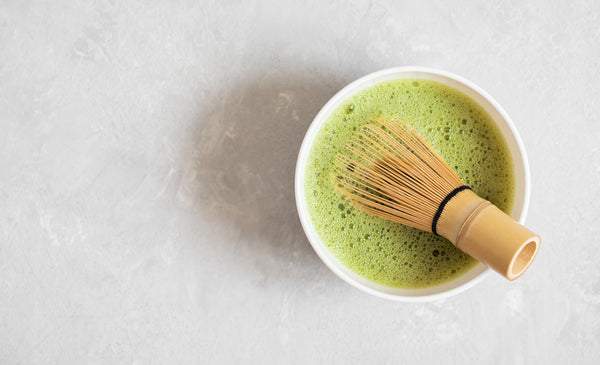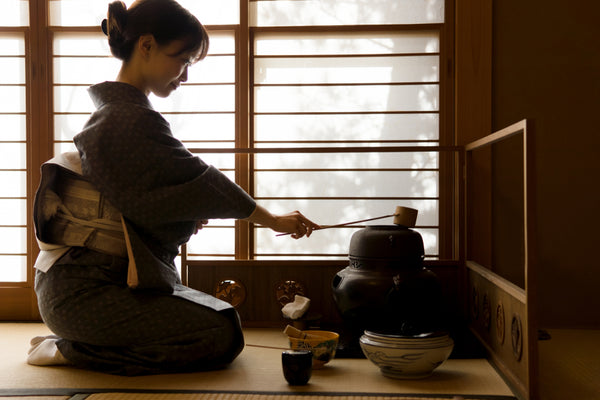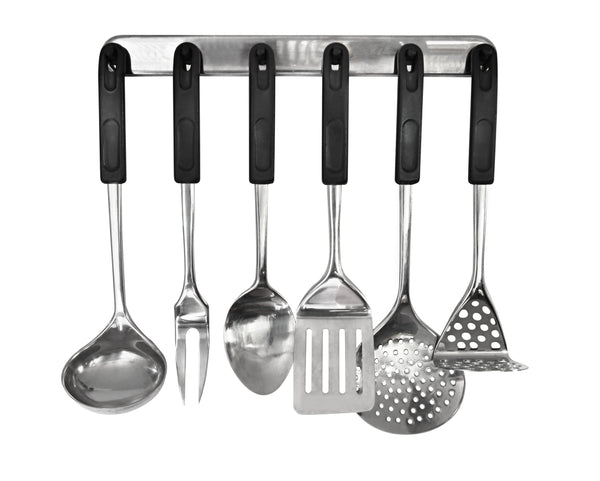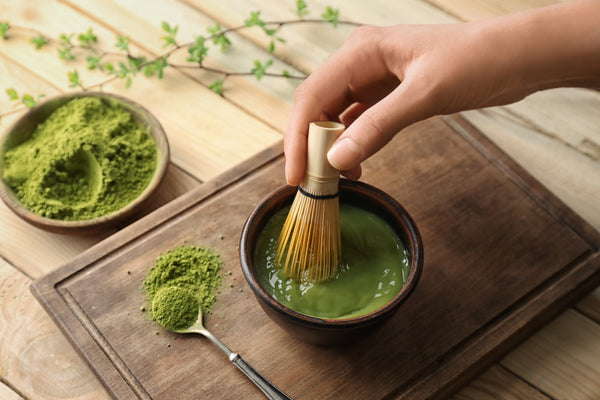A chasen, or bamboo whisk, is an essential tool for creating the perfect cup of matcha. While modern electric frothers are convenient and easy to use, the traditional Japanese method relies on the elegance and simplicity of the bamboo whisk. Crafted from just a single piece of bamboo, a chasen features numerous delicate tines that efficiently whisk matcha green tea powder into a delicate foam. With practice, this simple and elegant tool consistently produces a delicious and beautiful cup of matcha. The chasen is not just simply a utensil but a true testament to the artistry and ingenuity of Japanese craftsmanship. Each whisk is meticulously handcrafted by skilled artisans who understand the nuances of bamboo and the delicate balance required to create a tool that can whisk matcha to perfection. From selecting the right bamboo stalk to carving and shaping it into a delicate array of tines, the process of making a chasen is a labor of love that embodies the essence of Japanese tea culture.
The chasen is not just simply a utensil but a true testament to the artistry and ingenuity of Japanese craftsmanship. Each whisk is meticulously handcrafted by skilled artisans who understand the nuances of bamboo and the delicate balance required to create a tool that can whisk matcha to perfection. From selecting the right bamboo stalk to carving and shaping it into a delicate array of tines, the process of making a chasen is a labor of love that embodies the essence of Japanese tea culture.
Check out our variety of beautiful whisks
History of the bamboo whisk 
Matcha tea powder was first introduced to Japan in the 1100s by a Zen Buddhist monk returning from China. Since then, matcha has become a time-honored tradition in Japanese culture and is increasingly used worldwide. The first official record of a bamboo whisk in Japan, however, dates back to the Muromachi period (1336-1573). High-quality whisks were requested by Murata Juko, a well-known tea master. These whisks were so finely crafted that they were later presented to the emperor. Since then, chasen artistry has been passed on from generation to generation.
Why you shouldn’t use metal 
While it can be tempting to whip out a metal spoon or fork to quickly make a cup of tea, metal is actually one of the things you want to avoid when making matcha. Metal whisks and utensils can impart unwanted flavors to the delicate matcha powder, compromising both taste and quality.
Moreover, stainless steel can also impact matcha’s incredible health benefits. Metal can oxidize the delicate matcha powder, lowering the antioxidant properties.
Learn 5 other common mistakes when making matcha
How to use a chasen
A bamboo whisk is a wonderful tool to use when making matcha, but it can also be a bit tricky to learn the fine technique at first!
The purpose of a chasen is to aerate the matcha powder, creating the classic foam and froth on top of your tea. Since matcha is so steeped in tradition, there are different types of chasens and different ways to use each.
Using your bamboo whisk effectively can take some practice, so be gentle with yourself if you’re first starting out. First, use your chasen to break up matcha clumps in your tea bowl. Next, keep your wrist straight as you rapidly move the whisk in an “m” or “w” shaped zig-zag motion. The motion should be smooth and even across the entire bowl.
In order to protect your bamboo whisk, avoid pushing too hard on the chasen, and don’t let the delicate bamboo tines touch the bottom of your bowl. The motion of the whisk should be centered around the middle to the top portion of the tea.
Learn more about how to make a cup of matcha tea here
How to clean your bamboo whisk
Cleaning your bamboo whisk is a straightforward process that helps maintain its integrity and prolongs its lifespan. Follow these three easy steps:
- Rinse with Warm Water: After each use, rinse the chasen under warm running water. Hold it with the tines facing downward to prevent water from accumulating in the handle or damaging the tines. No soap is required!
- Air Dry: Once clean, gently shake the chasen to remove any extra water droplets, then allow it to air dry naturally. Avoid using a towel or cloth to dry it, as this can damage the tines. Place the whisk on a clean, dry surface, or use a Chasen-tate (whisk holder). Ensure that there’s proper airflow around it.
- Store in a Clean, Dry Place: To prevent mold or mildew growth, store the bamboo whisk in a clean, dry place. Avoid storing it in airtight containers or areas with high humidity, as moisture can compromise its quality and grow mold. A bamboo whisk holder or stand is ideal for keeping the chasen upright and protected between uses.
By taking proper care of your whisk, you can ensure that it remains in pristine condition, ready to whisk up the perfect cup of matcha whenever you’d like!







